Every beautiful face needs to maintain its worth and requires some sort of advice in case of any problem.Beauty care tips,skin care, hair care, body care, fashion in vogue , all you can find here.
Tuesday, May 31, 2011
Friday, May 27, 2011
Ispaghol Fibers For Decreasing Hyperlipidemia
Introduction
 Coronary heart disease is usually caused by a condition called atherosclerosis, which occurs when fatty material and a substance called plaque build up on the walls of your arteries. This causes them to get narrow. As the coronary arteries narrow, blood flow to the heart can slow down or stop. This can cause chest pain (stable angina), shortness of breath, heart attack, and other symptoms.1Coronary heart disease (CHD) is the leading cause of death in the United States for men and women.2Many things increase risk for heart disease. One of the most common cause/risk is fats in the blood circulation.3Cholesterol in our body synthesizes many hormones, vitamin D, and the bile acids that help to digest fat. It takes only a small amount of cholesterol in the blood to meet these needs.4,10,12 If human body have too much cholesterol in bloodstream, the excess is deposited in arteries, including the coronary arteries, where it contributes to the narrowing and blockages that cause the signs and symptoms of heart disease.5Psyllium or Plantago ovata Forsk is an annual plant grown primarily in India, southern Europe and the United States. Psyllium is cultivated primarily for its use as a laxative or as a dietary fiber ingredient in foods, such as ready-to-eat cereals. It is also known as blond psyllium, Indian psyllium and plantain. Although the seed alone contains the bioactive mucilage polysaccharide, the refined psyllium seed husk, known as the Ispaghula husk, is the psyllium component principally used as the soluble fiber source for laxatives, ready-to-eat cereals and nutritional supplements.6,9 In specific doses, it lowers serum total cholesterol and LDL- Cholesterol remarkably.7 Psyllium husk fiber is a viscous, mostly water-soluble fiber prepared by mechanical removal of the husk from blonde psyllium seed (Plantago ovata). Early or uncontrolled studies suggested that psyllium improved glycemic and lipid control in individuals with type 2 diabetes.8,14 The mechanism of psyllium's possible hypocholesterolemic activity is not fully understood. The bioactive agent of psyllium is a soluble, viscous xylan fiber. It is thought that this polysaccharide stimulates the conversion of cholesterol to bile acids and that it stimulates fecal excretion of bile acids. Psyllium may also decrease the intestinal absorption of cholesterol.9
Coronary heart disease is usually caused by a condition called atherosclerosis, which occurs when fatty material and a substance called plaque build up on the walls of your arteries. This causes them to get narrow. As the coronary arteries narrow, blood flow to the heart can slow down or stop. This can cause chest pain (stable angina), shortness of breath, heart attack, and other symptoms.1Coronary heart disease (CHD) is the leading cause of death in the United States for men and women.2Many things increase risk for heart disease. One of the most common cause/risk is fats in the blood circulation.3Cholesterol in our body synthesizes many hormones, vitamin D, and the bile acids that help to digest fat. It takes only a small amount of cholesterol in the blood to meet these needs.4,10,12 If human body have too much cholesterol in bloodstream, the excess is deposited in arteries, including the coronary arteries, where it contributes to the narrowing and blockages that cause the signs and symptoms of heart disease.5Psyllium or Plantago ovata Forsk is an annual plant grown primarily in India, southern Europe and the United States. Psyllium is cultivated primarily for its use as a laxative or as a dietary fiber ingredient in foods, such as ready-to-eat cereals. It is also known as blond psyllium, Indian psyllium and plantain. Although the seed alone contains the bioactive mucilage polysaccharide, the refined psyllium seed husk, known as the Ispaghula husk, is the psyllium component principally used as the soluble fiber source for laxatives, ready-to-eat cereals and nutritional supplements.6,9 In specific doses, it lowers serum total cholesterol and LDL- Cholesterol remarkably.7 Psyllium husk fiber is a viscous, mostly water-soluble fiber prepared by mechanical removal of the husk from blonde psyllium seed (Plantago ovata). Early or uncontrolled studies suggested that psyllium improved glycemic and lipid control in individuals with type 2 diabetes.8,14 The mechanism of psyllium's possible hypocholesterolemic activity is not fully understood. The bioactive agent of psyllium is a soluble, viscous xylan fiber. It is thought that this polysaccharide stimulates the conversion of cholesterol to bile acids and that it stimulates fecal excretion of bile acids. Psyllium may also decrease the intestinal absorption of cholesterol.9 PATIENTS&METHOD
PATIENTS&METHOD
Study was conducted in the department of Pharmacology, Basic Medical Sciences Institute, Jinnah Postgraduate Medical Centre, Karachi, from January to July 2006.Forty patients of primary hyperlipidemia were enrolled in the study, selected from ward and OPD of National Institute of Cardiovascular Diseases (NICVD), Karachi. Previously diagnosed and untreated primary hyperlipidemic patients of either sex, age range from 21 to 60 years were randomly selected. Patients with peptic ulcer, hepatic disease, alcoholism, hypothyroidism, diabetes mellitus, and renal disease were excluded from the study as these pathological conditions can mask hyperlipidemic abnormality of the patient.10 After explaining the limitations, written consent was obtained from all participants. The study period consisted of 90 days with fortnightly follow up visits. Name, age, sex, occupation, address, previous medication, date of follow up visit and laboratory investigations, etc of each patient was recorded on a Performa, especially designed for the study. All the base line assessments were taken on the day of inclusion (Day-0) in the study and a similar assessment was taken on Day-90 of research design. After fulfilling the inclusion criteria patients were divided in two groups, i.e.Drug-1 (3 gram of Psyllium husk) and Drug-2 (placebo capsules, containing equal amounts of partly grinded wheat) groups. Twenty hyperlipidemic patients of group-1 were provided packets containing 3 gram of Psyllium husk and were advised to take one packet thrice daily along with diet control and exercise for 40-60 minutes (brisk walk). This regimen was followed for 12 weeks.Twenty hyperlipidemic patients of drug-2 group having borderline ‘high' lipid profile were included in this group taken as control, and were advised to continue on isocaloric weight maintaing diet, i.e. step-1 diet and brisk walk for next three months. Patients of this group were provided capsules containing equal amount of partly grinded wheat and orange flavor, taken one capsule thrice daily after meal for three months.
Patients were advised to come in OPD, every two weeks for follow up to check blood pressure, weight, pulse rate and general appearance of the individual. Drug compliance to the regimen was monitored by interview and counseling at each clinical visits. Serum total cholesterol was estimated by the enzymatic calorimetric method (Rivelles et al 1994) using kit cat. # 303113050 by Eli Tech Diagnostic, France.10 Triglycerides were also estimated by enzymatic calorimetric method, using kit Cat. # 304710050 by Eli Tech Diagnostic. France. HDL- C was determined by using kit Cat. # 303210040 by Eli Tech Diagnostic, France. Serum LDL-cholesterol was calculated by Friedwald formula described by Davidson et al11 (LDL-Cholesterol = Total Cholesterol-(Triglycerides/5 +HDL-Cholesterol) also quoted by Delong et al (1986)12 and Beamount et al (1970).13 Data were expressed as the mean ± SD and "t" test was applied to determine statistical significance as the difference. A probability value of <0.05 was the limit of significance.
 RESULTS
RESULTS
Out of 40 patients, 38 completed the over all study period. Two patients withdrew from one group (Psyllium group) due to metallic taste of Psyllium husk. Tables showing base line and post treatment values are self explanatory. When results were summed up and test parameters were compared, it was seen that, after 90 days of treatment with Psyllium, serum total cholesterol decreased from 228.27±4.89 mg/dl to 199.22±2.30 mg/dl, which is highly significant statistically (P0.05).
DISCUSSION
There are various groups of drugs which are used for the treatment of hyperlipidemia. HMG-Co reductase inhibitors (Statins), fibric acids, Niacin and psyllium hydrophilic mucilloids are important lipid lowering drugs.14 Among these lipid lowering drugs, Psyllium has its own remarkable role to decrease serum total cholesterol and LDL- cholesterol.15 In our study, serum total cholesterol decreased 12.72 % in 90 days of treatment with Psyllium husk in hyperlipidemic patients. Our study matches with the study of Anderson et al16 who observed almost same changes in serum total cholesterol and LDL- Cholesterol of 26 male patients, treated with 3.4 grams of Psyllium thrice daily for eight weeks. Our study also matches with the study of Maciejko et al17 who observed 12.00 % decrease in serum total cholesterol and 16.12 % decrease in LDL-Cholesterol in 40 hyperlipidemic patients treated with 4 grams Psyllium husk for the period of 16 weeks. He also included other parameters in his study, like body weight and systolic/diastolic blood pressure which were also significantly reduced. Our results regarding decrease in serum total cholesterol level contrasts with the results of research study conducted by Haskell et al18who observed only 6.11 % decrease in total cholesterol levels in 40 hyperlipidemic patients, when they used 2 gram Psyllium husk in 18 female patients for the period of eight weeks. This remarkable change in results may be due to changes in gender of patients, and duration of drug used. He has mentioned the mechanism of action of Psyllium husk that these Psyllium fibers stimulate bile acid synthesis in liver (7 α-hydroxylase activity). Second mechanism, he mentioned is diversion of hepatic cholesterol for bile acid synthesis. Effect of Psyllium husk on absorption of cholesterol and fat appeared minimal but may make a small contribution to cholesterol lowering. Additional mechanisms such as inhibition of hepatic cholesterol synthesis by propionate and secondary effects of slowing glucose absorption may also play a role.19 In our study placebo group shows 3.35 % reduction in serum total cholesterol and 1.29 % reduction in LDL-Cholesterol. These results matches with the study of Spence et al20 who observed same effects of placebo given to 44 male and female hyperlipidemic patients having moderately high lipid profile. Their study shows 2.89 % reduction in serum total cholesterol and 2.21 % reduction in LDL-Cholesterol. Results of research study conducted at Lipid Research Centre held by Levy et al21 do not match with our results of research. They observed 5.98 % and 9.97 % reduced levels of serum total cholesterol and LDL-Cholesterol, respectively, in 109 hyperlipidemic patients treated by Psyllium husk 3 gram daily for the period of 24 weeks. Their study was double blind placebo controlled. These changes in results may be due to double blind research design, large sample size and environmental factors like in that study all hyperlipidemic patients were admitted at Lipid Research Centre, so were closely observed and advised for brisk walk and to take controlled step-1 diet.22 Drug compliance between our and their study was same, i.e. in our study patients discontinued taking Psyllium due to its metallic taste. In their study 11 patients discontinued to take Psyllium fibers, mostly due to same reasons of its metallic taste. Another study conducted by Kane et al23 also contradicts with our study as they observed only 12.22 % reduction in LDL- Cholesterol when 3 gram Psyllium husk was administered in 14 female hyperlipidemic patients above the age of 40 years. Our study proved 18.88 % reduction in LDL-Cholesterol levels which is much higher than 12.22 %. Change in these results may be due only female gender and age which was specifically above 4o years. Our study comprised of both male and female hyperlipidemic patients with age range between 21-60 years.
 Coronary heart disease is usually caused by a condition called atherosclerosis, which occurs when fatty material and a substance called plaque build up on the walls of your arteries. This causes them to get narrow. As the coronary arteries narrow, blood flow to the heart can slow down or stop. This can cause chest pain (stable angina), shortness of breath, heart attack, and other symptoms.1Coronary heart disease (CHD) is the leading cause of death in the United States for men and women.2Many things increase risk for heart disease. One of the most common cause/risk is fats in the blood circulation.3Cholesterol in our body synthesizes many hormones, vitamin D, and the bile acids that help to digest fat. It takes only a small amount of cholesterol in the blood to meet these needs.4,10,12 If human body have too much cholesterol in bloodstream, the excess is deposited in arteries, including the coronary arteries, where it contributes to the narrowing and blockages that cause the signs and symptoms of heart disease.5Psyllium or Plantago ovata Forsk is an annual plant grown primarily in India, southern Europe and the United States. Psyllium is cultivated primarily for its use as a laxative or as a dietary fiber ingredient in foods, such as ready-to-eat cereals. It is also known as blond psyllium, Indian psyllium and plantain. Although the seed alone contains the bioactive mucilage polysaccharide, the refined psyllium seed husk, known as the Ispaghula husk, is the psyllium component principally used as the soluble fiber source for laxatives, ready-to-eat cereals and nutritional supplements.6,9 In specific doses, it lowers serum total cholesterol and LDL- Cholesterol remarkably.7 Psyllium husk fiber is a viscous, mostly water-soluble fiber prepared by mechanical removal of the husk from blonde psyllium seed (Plantago ovata). Early or uncontrolled studies suggested that psyllium improved glycemic and lipid control in individuals with type 2 diabetes.8,14 The mechanism of psyllium's possible hypocholesterolemic activity is not fully understood. The bioactive agent of psyllium is a soluble, viscous xylan fiber. It is thought that this polysaccharide stimulates the conversion of cholesterol to bile acids and that it stimulates fecal excretion of bile acids. Psyllium may also decrease the intestinal absorption of cholesterol.9
Coronary heart disease is usually caused by a condition called atherosclerosis, which occurs when fatty material and a substance called plaque build up on the walls of your arteries. This causes them to get narrow. As the coronary arteries narrow, blood flow to the heart can slow down or stop. This can cause chest pain (stable angina), shortness of breath, heart attack, and other symptoms.1Coronary heart disease (CHD) is the leading cause of death in the United States for men and women.2Many things increase risk for heart disease. One of the most common cause/risk is fats in the blood circulation.3Cholesterol in our body synthesizes many hormones, vitamin D, and the bile acids that help to digest fat. It takes only a small amount of cholesterol in the blood to meet these needs.4,10,12 If human body have too much cholesterol in bloodstream, the excess is deposited in arteries, including the coronary arteries, where it contributes to the narrowing and blockages that cause the signs and symptoms of heart disease.5Psyllium or Plantago ovata Forsk is an annual plant grown primarily in India, southern Europe and the United States. Psyllium is cultivated primarily for its use as a laxative or as a dietary fiber ingredient in foods, such as ready-to-eat cereals. It is also known as blond psyllium, Indian psyllium and plantain. Although the seed alone contains the bioactive mucilage polysaccharide, the refined psyllium seed husk, known as the Ispaghula husk, is the psyllium component principally used as the soluble fiber source for laxatives, ready-to-eat cereals and nutritional supplements.6,9 In specific doses, it lowers serum total cholesterol and LDL- Cholesterol remarkably.7 Psyllium husk fiber is a viscous, mostly water-soluble fiber prepared by mechanical removal of the husk from blonde psyllium seed (Plantago ovata). Early or uncontrolled studies suggested that psyllium improved glycemic and lipid control in individuals with type 2 diabetes.8,14 The mechanism of psyllium's possible hypocholesterolemic activity is not fully understood. The bioactive agent of psyllium is a soluble, viscous xylan fiber. It is thought that this polysaccharide stimulates the conversion of cholesterol to bile acids and that it stimulates fecal excretion of bile acids. Psyllium may also decrease the intestinal absorption of cholesterol.9 PATIENTS&METHOD
PATIENTS&METHOD Study was conducted in the department of Pharmacology, Basic Medical Sciences Institute, Jinnah Postgraduate Medical Centre, Karachi, from January to July 2006.Forty patients of primary hyperlipidemia were enrolled in the study, selected from ward and OPD of National Institute of Cardiovascular Diseases (NICVD), Karachi. Previously diagnosed and untreated primary hyperlipidemic patients of either sex, age range from 21 to 60 years were randomly selected. Patients with peptic ulcer, hepatic disease, alcoholism, hypothyroidism, diabetes mellitus, and renal disease were excluded from the study as these pathological conditions can mask hyperlipidemic abnormality of the patient.10 After explaining the limitations, written consent was obtained from all participants. The study period consisted of 90 days with fortnightly follow up visits. Name, age, sex, occupation, address, previous medication, date of follow up visit and laboratory investigations, etc of each patient was recorded on a Performa, especially designed for the study. All the base line assessments were taken on the day of inclusion (Day-0) in the study and a similar assessment was taken on Day-90 of research design. After fulfilling the inclusion criteria patients were divided in two groups, i.e.Drug-1 (3 gram of Psyllium husk) and Drug-2 (placebo capsules, containing equal amounts of partly grinded wheat) groups. Twenty hyperlipidemic patients of group-1 were provided packets containing 3 gram of Psyllium husk and were advised to take one packet thrice daily along with diet control and exercise for 40-60 minutes (brisk walk). This regimen was followed for 12 weeks.
Patients were advised to come in OPD, every two weeks for follow up to check blood pressure, weight, pulse rate and general appearance of the individual. Drug compliance to the regimen was monitored by interview and counseling at each clinical visits. Serum total cholesterol was estimated by the enzymatic calorimetric method (Rivelles et al 1994) using kit cat. # 303113050 by Eli Tech Diagnostic, France.10 Triglycerides were also estimated by enzymatic calorimetric method, using kit Cat. # 304710050 by Eli Tech Diagnostic. France. HDL- C was determined by using kit Cat. # 303210040 by Eli Tech Diagnostic, France. Serum LDL-cholesterol was calculated by Friedwald formula described by Davidson et al11 (LDL-Cholesterol = Total Cholesterol-(Triglycerides/5 +HDL-Cholesterol) also quoted by Delong et al (1986)12 and Beamount et al (1970).13 Data were expressed as the mean ± SD and "t" test was applied to determine statistical significance as the difference. A probability value of <0.05 was the limit of significance.
 RESULTS
RESULTSOut of 40 patients, 38 completed the over all study period. Two patients withdrew from one group (Psyllium group) due to metallic taste of Psyllium husk. Tables showing base line and post treatment values are self explanatory. When results were summed up and test parameters were compared, it was seen that, after 90 days of treatment with Psyllium, serum total cholesterol decreased from 228.27±4.89 mg/dl to 199.22±2.30 mg/dl, which is highly significant statistically (P0.05).
DISCUSSION
There are various groups of drugs which are used for the treatment of hyperlipidemia. HMG-Co reductase inhibitors (Statins), fibric acids, Niacin and psyllium hydrophilic mucilloids are important lipid lowering drugs.14 Among these lipid lowering drugs, Psyllium has its own remarkable role to decrease serum total cholesterol and LDL- cholesterol.15 In our study, serum total cholesterol decreased 12.72 % in 90 days of treatment with Psyllium husk in hyperlipidemic patients. Our study matches with the study of Anderson et al16 who observed almost same changes in serum total cholesterol and LDL- Cholesterol of 26 male patients, treated with 3.4 grams of Psyllium thrice daily for eight weeks. Our study also matches with the study of Maciejko et al17 who observed 12.00 % decrease in serum total cholesterol and 16.12 % decrease in LDL-Cholesterol in 40 hyperlipidemic patients treated with 4 grams Psyllium husk for the period of 16 weeks. He also included other parameters in his study, like body weight and systolic/diastolic blood pressure which were also significantly reduced. Our results regarding decrease in serum total cholesterol level contrasts with the results of research study conducted by Haskell et al18who observed only 6.11 % decrease in total cholesterol levels in 40 hyperlipidemic patients, when they used 2 gram Psyllium husk in 18 female patients for the period of eight weeks. This remarkable change in results may be due to changes in gender of patients, and duration of drug used. He has mentioned the mechanism of action of Psyllium husk that these Psyllium fibers stimulate bile acid synthesis in liver (7 α-hydroxylase activity). Second mechanism, he mentioned is diversion of hepatic cholesterol for bile acid synthesis. Effect of Psyllium husk on absorption of cholesterol and fat appeared minimal but may make a small contribution to cholesterol lowering. Additional mechanisms such as inhibition of hepatic cholesterol synthesis by propionate and secondary effects of slowing glucose absorption may also play a role.19 In our study placebo group shows 3.35 % reduction in serum total cholesterol and 1.29 % reduction in LDL-Cholesterol. These results matches with the study of Spence et al20 who observed same effects of placebo given to 44 male and female hyperlipidemic patients having moderately high lipid profile. Their study shows 2.89 % reduction in serum total cholesterol and 2.21 % reduction in LDL-Cholesterol. Results of research study conducted at Lipid Research Centre held by Levy et al21 do not match with our results of research. They observed 5.98 % and 9.97 % reduced levels of serum total cholesterol and LDL-Cholesterol, respectively, in 109 hyperlipidemic patients treated by Psyllium husk 3 gram daily for the period of 24 weeks. Their study was double blind placebo controlled. These changes in results may be due to double blind research design, large sample size and environmental factors like in that study all hyperlipidemic patients were admitted at Lipid Research Centre, so were closely observed and advised for brisk walk and to take controlled step-1 diet.22 Drug compliance between our and their study was same, i.e. in our study patients discontinued taking Psyllium due to its metallic taste. In their study 11 patients discontinued to take Psyllium fibers, mostly due to same reasons of its metallic taste. Another study conducted by Kane et al23 also contradicts with our study as they observed only 12.22 % reduction in LDL- Cholesterol when 3 gram Psyllium husk was administered in 14 female hyperlipidemic patients above the age of 40 years. Our study proved 18.88 % reduction in LDL-Cholesterol levels which is much higher than 12.22 %. Change in these results may be due only female gender and age which was specifically above 4o years. Our study comprised of both male and female hyperlipidemic patients with age range between 21-60 years.
Tuesday, May 24, 2011
Aloe Vera and its Miracles
Aloe Vera is botanically known as Aloe barbadensis but better known as aloe vera and some other common name are Curacao Aloe, Barbados Aloe, Lily of the Desert and it is being used from 18th and 19th centuries. In the world there are over 500 species of aloe vera and which is mostly resident to Africa and it is grown in most subtropical and tropical locations like Latin America and the Caribbean. Aloe vera is a member of the lily family and it looks like cactus.
The name of aloe vera is derived from the Arabic alloeh which mean is bitter because the liquid discharge from it's leave is so bitter. The record of the uses of this plant shows that in 1500 B.C it is used in treating burns, infections, parasites. Aloe vera is useful to make gel and latex. At present aloe vera is increasing it medical as well as commercial use by making the product like gel, cream, shampoo etc. Aloe barbadensis (Aloe vera) variety which has the best medicinal properties.
American consumers are most familiar with aloe's use in skin-care products, but aloe can also be used as a beverage. Sometime uses of aloe vera can occur side effects like abdominal pain, diarrhea, and electrolyte imbalances, especially at higher doses.
It is quietly right. According to some researchers and scientists, aloe Vera can protect the body from various health problems, sickness and any type of cancer.
 Aloe Vera Research
Aloe Vera Research
In 1996, aloe Vera research has been performed at the Mahidol University, Bangkok and has shown that this herb has decreased the levels of blood sugar of approximately 72 sufferers who suffers from high expressing blood sugar. A few numbers of researchers such as Dr Peter Atherton have performed investigation on the aloe Vera and shown to be efficient in the following regions:
- It offers amazing results on the peptic ulcers.
- It has shown beneficial in the healing of injuries
- It is beneficial in the treatment of psoriasis and eczema.
- It has shown that it is useful in the treatment of inflammatory bowel disorders and irritable bowel syndrome.
Sunday, May 22, 2011
Sexy Summer Sandals in Vogue
 Summer is on and its time to check out the best pairs of sandals in trend. They are the ideal footwear that keeps your stay cool in the hot summer. Apart from comfort, style too should be counted. And to stay in style, a pair of sexy sandals is the apt choice to boost up your appearance. Well, sexy shoes are of many types varying in toe and heel style with beautiful designs and colorful hues to gain you a great appearance. And here are some of the best types of sexy shoes in trend now that are much loved my all women.
Summer is on and its time to check out the best pairs of sandals in trend. They are the ideal footwear that keeps your stay cool in the hot summer. Apart from comfort, style too should be counted. And to stay in style, a pair of sexy sandals is the apt choice to boost up your appearance. Well, sexy shoes are of many types varying in toe and heel style with beautiful designs and colorful hues to gain you a great appearance. And here are some of the best types of sexy shoes in trend now that are much loved my all women.Strappy Sandals
Strappy shoes are the ideal choice of sexy sandals to add to you wardrobe in this summer. Sexy Strappy shoes are a great way to jazz up with a mid-length or full skirt in this sunny weather to stay in style and gain great comfort as well. Strappy evening sandals or a pair of pumps will add just a bit of oomph to your office attire and gain you a charming appearance in the crowd. They are available in various styles with different heel heights, embellishments, studs and hues to meet your style and comfort requirements.
Heel Sandals
Have all the fun in this world in a fabulous pair of sexy heel sandals. A pair of heel sandals is enough to define your sex appeal to everyone. Heels lift your spirit to endless skies, adding seductive inches to a woman’s legs. This footwear vary in heel heights ranging from low to medium to high heel catered to the needs of the style conscious women. Wearing high heel, you feel like wearing the spirit of a unique man on your feet, making you irresistible and simply gorgeous. Go on. Spike it! Piece it! Chunk it! Heel Sandals gives you the style you want that stay in this summer.
Wedges
Wedges are another type of sexy sandals that whirl up the style diva in you and keep you stays comfort wearing them. These are perfect blend of style and comfort as well that keep your tired feet cool and sexy in them. Wedges are nothing but shoes featured with a heel that extends under the waist of the footwear to the forepart. Wedges give you the much required comfort than any other heels can do. These shoes are available in different styles ranging from Wedge flip flops to thongs to sexy slides to meet your mere requirements.
Boutique 9 Shoes, Glory Sandals: Feel like a princess this season in the bejeweled Glory Sandals from Boutique 9! Their unique t-strap shape and lavishly embellished upper will keep you looking cool and polished no matter how hot it gets.
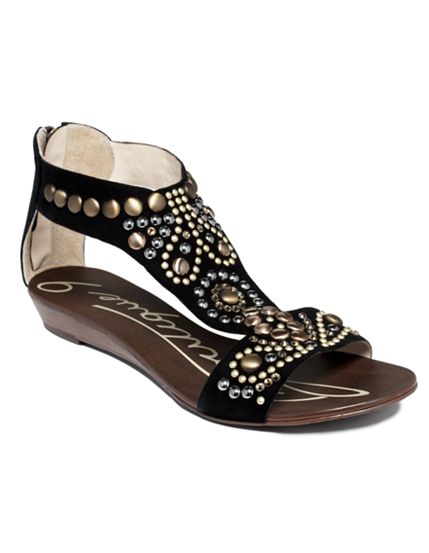 Original price of Glory Sandals at Macys is $130.00.
Original price of Glory Sandals at Macys is $130.00. BCBGeneration Shoes, Granger Sandals: The Granger Sandals from BCBGeneration bring Bollywood chic to every look with their richly embellished straps and joyful colors.
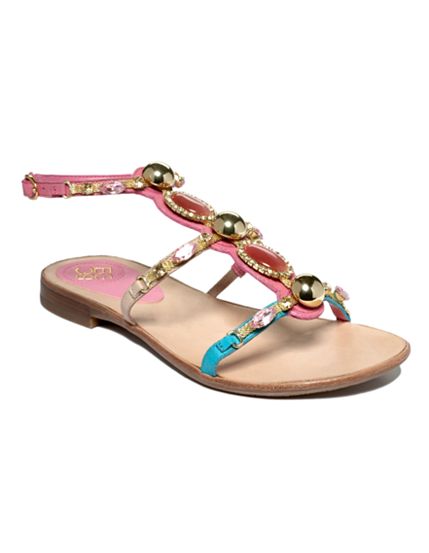 Original price of Granger Sandals at Macys is $89.00.
Original price of Granger Sandals at Macys is $89.00.Max Studio Shoes, Helix Sandals: Flaunt your summertime pedicure with the chic and bejeweled Helix thong sandals from Max Studio.
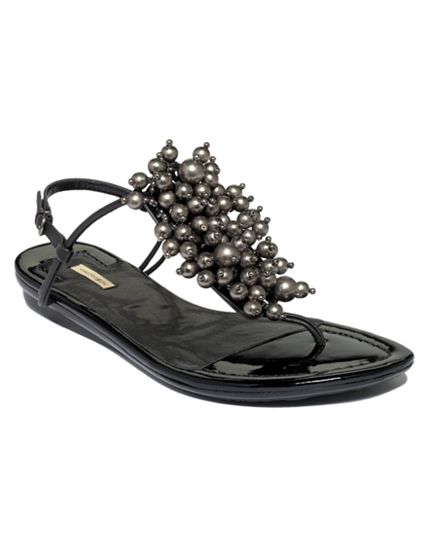 Original price of Helix Sandals at Macys is $95.00.
Original price of Helix Sandals at Macys is $95.00.Few among them are designed with anti-bacterial lining for moisture free comfort and protection for soft feet even during hot sunny days. Flat sandals with beads, rhinestones and embellishments give grand appearance in crowd. So enjoy hassle free walk in beach or stroll around crowded streets in evening with funky pair of flat sandals. Get these flat sandals from Macys by using Macys coupons available at CouponAlbum.com.
Friday, May 6, 2011
Beauty tips for oily skin
Some Useful Tips for Removing Oily Skin
 Oily skin is often a problem of many, because this type looks unattractive and unpleasing to look at. It is caused by too much production of oil or sebum from the sebaceous glands when overly stimulated and are overactive. When this happens, the skin is prone to the formation of zits and breakouts and can lead to more skin problems. To stop problems from cropping up, here are some tips to follow on how to treat oily skin.
Oily skin is often a problem of many, because this type looks unattractive and unpleasing to look at. It is caused by too much production of oil or sebum from the sebaceous glands when overly stimulated and are overactive. When this happens, the skin is prone to the formation of zits and breakouts and can lead to more skin problems. To stop problems from cropping up, here are some tips to follow on how to treat oily skin.1.Wash the face at least twice or thrice a day. Instead of using a cleanser, clean the face regularly with soap and water. But bear in mind to use only soap and products that are alcohol-based since it is irritating to the skin and can cause drying. But if the acne is recurring, use a salicylic-based cleanser for cleaning the face.
2.Before going to sleep, make sure that the face is devoid of any trace of makeup, especially if you are suffering from oily skin. This habit must be a daily routine and should be done no matter how tired you are and how late you are arriving home. Makeup is considered foreign bodies on the skin that blocks the skin pores and keeps the skin from breathing properly leading to more skin problems.
3.Ensure that the toner used for the face should not contain alcohol, as this can cause drying. Toner takes away deposits left by the cleanser and make the skin feel smooth and good.
4.Moisturizers should be used even if the skin is oily, as this helps for the hydration of the skin. Just make sure to use the one formulated for your skin type. A face mask that can purify or clay-based; is also needed once weekly to clear the pimples or just to protect the skin from any foreign bodies. A multivitamin mask protects the skin from the sun, damage from smoking and environment, and from early aging.
5.When you need to go outdoors, use lotion-based sunscreen that will not sit on the skin but can be absorbed straight away. A light moisturizer with spf. Protects the skin from the harmful ultraviolet rays from the sun.
6.Lessen the use of stimulants like hot spices.
7.Visit the sauna once in a while to regulate the oil glands in the facial skin.
8.Do away with picking and squeezing the zits and blackheads because this can cause scarring and skin damage that may be difficult to treat.
9.Visit a dermatologist and consult for severe skin problems and possible treatments.
Oily skin is beneficial as it renders the skin resistance and strength. It makes the moisture of the skin last longer and makes you younger-looking and fresh, making it less susceptible to wrinkles and early aging. But overproduction of oil makes the skin too oily and will look unattractive. That is why these tips are helpful in removing the grease from the face to make it more attractive, less shiny and greasy.
Wednesday, May 4, 2011
Glossy Lips
Collistar Summer Lip Gloss
Collistar Gloss Design has an irresistible, ultra-shiny finish that features a
scientifically-proven plumping effect which increases by 25% the volume of the lips, making them fuller, plumper and incredibly sensual in just one hour,while providing an ultra-sparkling effect.

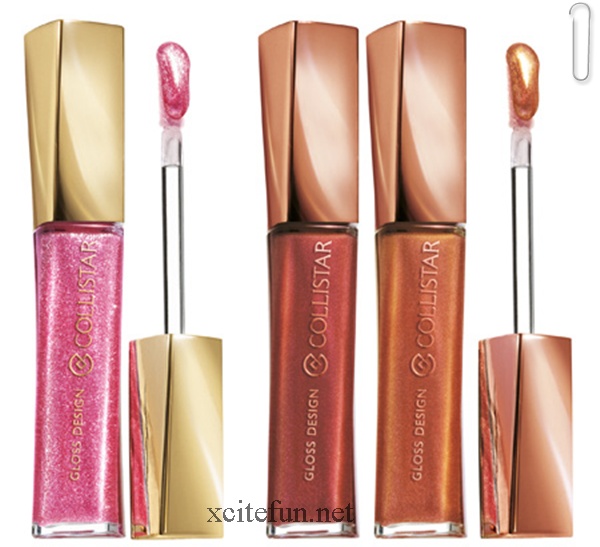
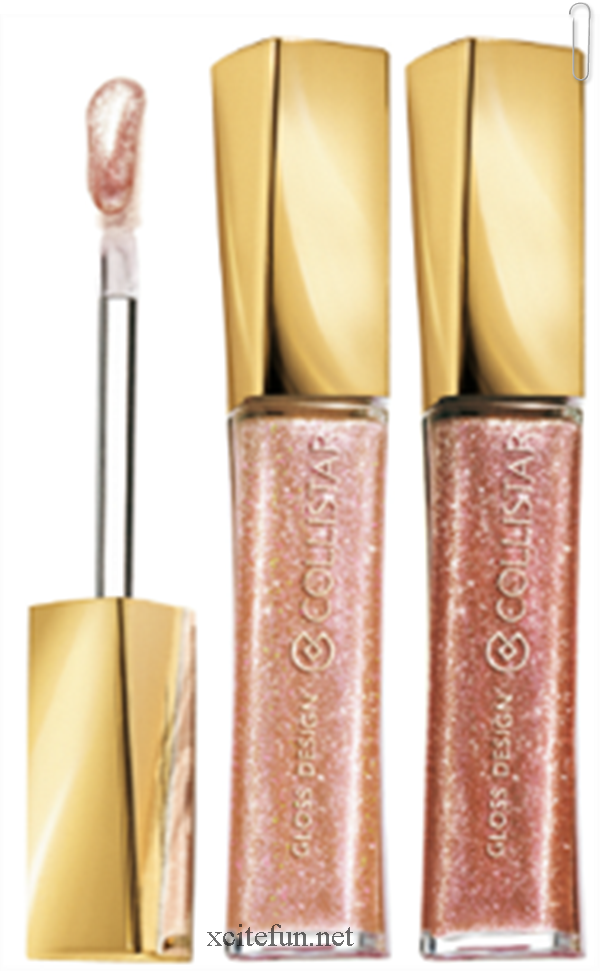
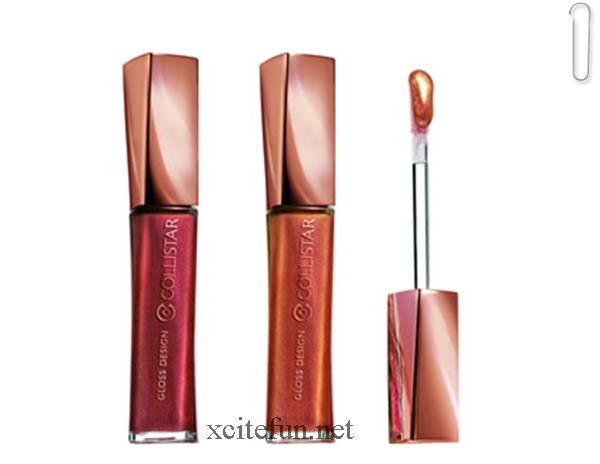
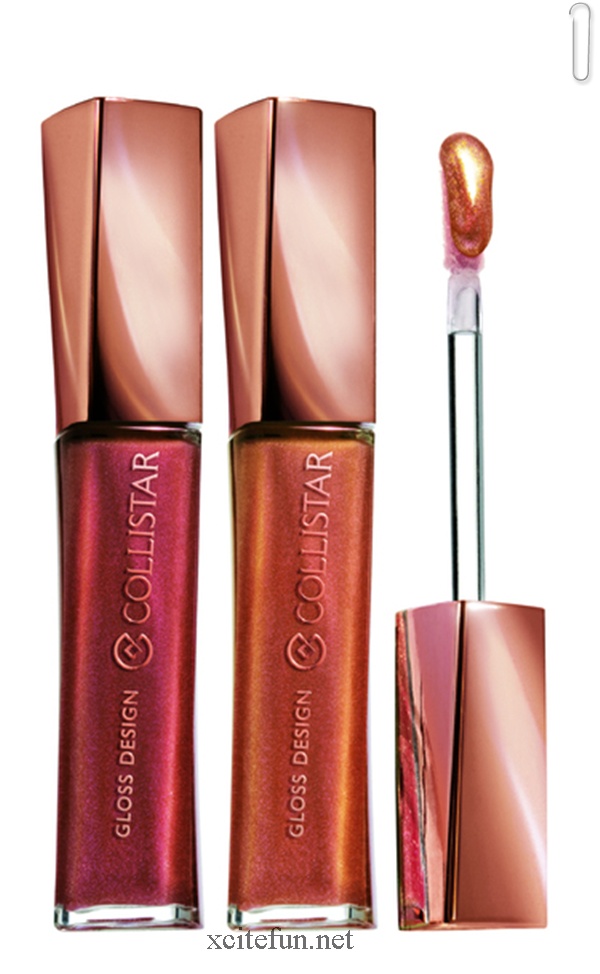
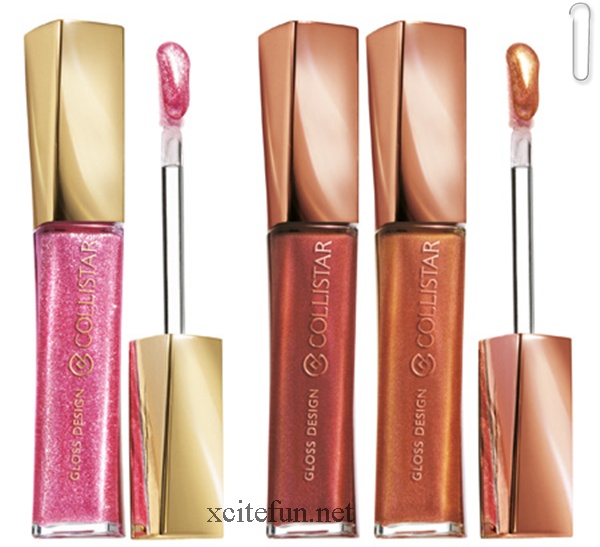

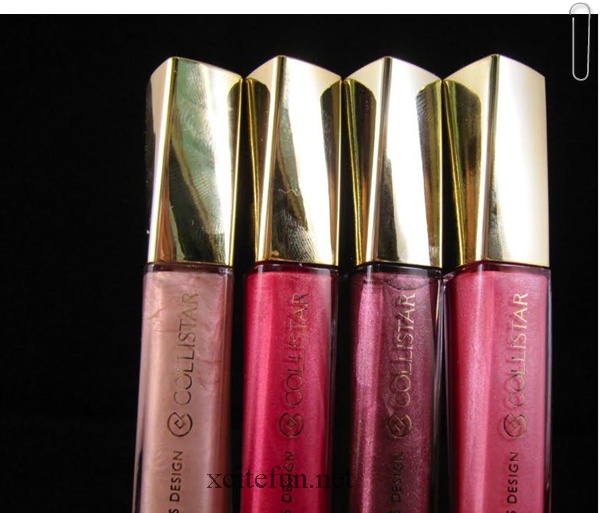
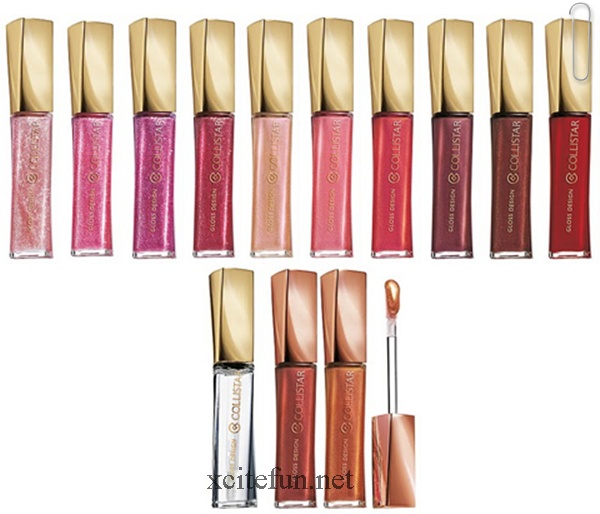

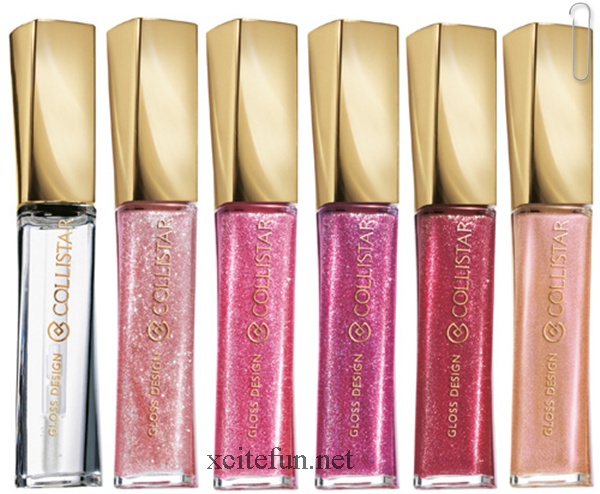
Collistar Gloss Design has an irresistible, ultra-shiny finish that features a
scientifically-proven plumping effect which increases by 25% the volume of the lips, making them fuller, plumper and incredibly sensual in just one hour,while providing an ultra-sparkling effect.











Subscribe to:
Comments (Atom)












